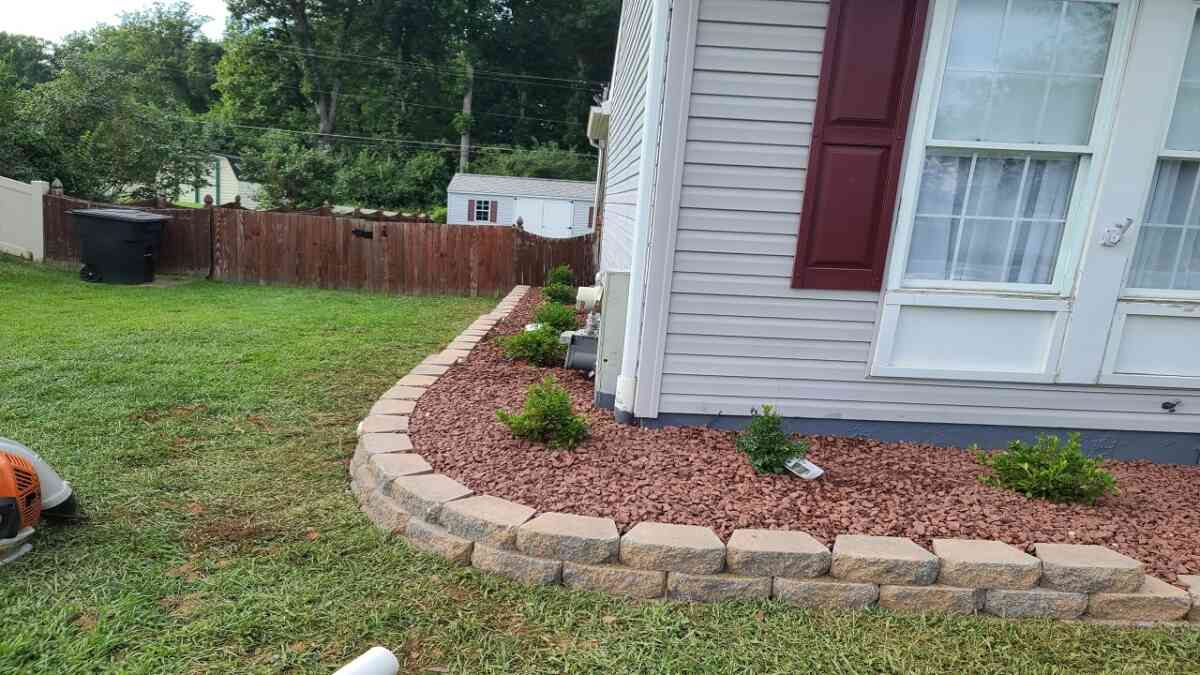When to Add Mulch to Your Garden
After you've got the weeds out of your garden The next step is to apply the mulch in your yard. Mulch keeps moisture in and stops weed seeds from growing. It is also beneficial applying a herbicide that is pre-emergent in order to stop weeds from growing. The herbicide needs water to be activated.
Removal of old mulch
When adding new mulch to the garden, it's essential to take away existing mulch out of the garden. This is to be sure that you aren't adding dirt into the bed of your garden. The old mulch could contain diseases and pest larvae and must be removed with care. It is also possible to choose an alternative mulch to replace the previous one. Based on the type of soil and climate it is possible to plant a cool-season cover crop like hairy clover or vetch. In the warmer season you can plant peas or buckwheat.
If you are planning to reuse old mulch for your garden, you should ensure that it is biodegradable. In the event that it's biodegradable, then you can include it in the compost pile. It will degrade quickly and then be dug up into the soil. The composted material will resemble the dark soil.
Another method of reusing old mulch for a garden is to put it on top of the mulch that was previously used. This will help maintain the moisture of soil and stop the growth of weeds. It also functions as an in-situ fertilizer. As the mulch breaks down it releases nutrients to the garden as it breaks down. Beware of using plastic, dyed or mulch that is not biodegradable as these types of mulches aren't able to let soil nutrients flow into it.
Next, examine how the mulch that was previously used. It is evident by its appearance if it's damaged and old. If it appears colored orange or yellow It could be caused by a fungus. Mycelium is produced by fungi, which aids plants in absorbing nutrients.
When adding new mulch to the garden, it is essential to take out the old mulch and prepare the area to plant. This can be accomplished by raking or dropping it on the tarp. Then, you can include compost in your garden beds. This will provide the ideal environment for planting your perennial flowers or veggies.
It is also possible to add hay to create a mulch. Hay is a good source of organic matter for the soil , and it also slows the growth of weeds. Be careful not to place hay in a pile around the root of a fruit tree or plant for vegetable. Hay can attract rodents to the plant, which can engulf it and limiting the growth of the plant.
New mulch to be added
The addition of new mulch to your garden is an excellent method to enrich the soil. There are a variety of mulchavailable, and you can make use of mulches that are readily available near your home. It is important to select one that is able to enrich the soil and can be easily put in place. Also, consider the way it looks. be. The most popular mulch that is popular are shredded trees. Shredded bark is an excellent option because it breaks down slowly and is fairly inexpensive in comparison to other types of mulch.
Mulch helps protect the soil and keeps the soil moist and deters the growth of weeds. It also decreases how much work that you have to perform to ensure your plants are healthy. When you decide to purchase a new mulch, look at the soil that you used last year. Did it have a disease? The old mulch could be contaminated and this could cause diseases and weeds to grow within this new layer. In these instances it is an ideal idea to put in new mulch.
It is important to change your mulch each year because the mulch you used to put it in will eventually degrade and get weathered. It also loses its colour as it gets older. Certain types that are made of mulch last longer than other types, and will remain in color for a longer period of time. To get the best results, you should add fresh compost to the garden every spring. It will make sure that the beds remain fresh after an extended winter.
Making new mulch for your garden is an easy procedure that you can complete yourself, provided that you have the proper tools. There are tools for making mulch to make the job easier. A mulch rake can make the task much easier. If you're not an expert at landscaping, it might be best to engage an expert.
If the old mulch is still in good shape You can recycle it in a natural way. It can be used to enhance your compost bin. If the mulch you have used isn't exposed to insects or diseases, you can add it easily to your gardens. Compost is an excellent method of recycling mulch.
Eliminating the weeds
Before you add mulch, take out the weeds in your garden. The most effective method to do this is to do it by hand. It is essential to rid yourself of the entire plant even its root system. If you have weeds that have shallow roots it is possible to grab them by their stems and remove them. If they have roots that are deep then you'll need to use a hoe to break up the dirt around them.
You can also eliminate plants by pouring boiling water over them. This technique is extremely effective since the seeds of the plants will be destroyed, and the water kills the weeds instantly. But, be extremely cautious when using this technique, since it could cause lots of injuries to plants.
In addition to being ugly In addition, they can be destructive. They are able to steal water and nutrients from your plants. If you remove them they'll grow again, making them impossible to completely eliminate. They can also be difficult to control naturally since you can't stop the seeds from exploding into your garden. If you do use mulch in your garden, you can control weeds naturally without using any chemicals on them.
Before you add mulch in your garden, it's essential to get rid of all plants. Although you can do this manually, if you have weeds that persist, you must apply an herbicide prior to mulching. The quantity of herbicide that you apply will be determined by how big the drops.
In the summer months, the weeds are mostly summer annuals. They germinate in spring, and continue to grow throughout the time of summer. They are the most commonly found weeds in gardens. The two main types of annual weeds that grow in summer are broadleaf weeds and grasses.
A hoe is a excellent option to weed a garden. Be sure to choose one with a handle that is long and a sharp blade. Be cautious when using a hoe in order to avoid turning the soil over or spreading the seeds of weeds that have been sown in the soil.
Making soil ready for the next growing season
If you're trying to improve the soil's quality by adding compost during the autumn is an excellent method to start. It can improve the soil and allow you to grow better plants in the spring. When you add compost, add it to your soil when it's damp and work it into a depth that is 12 inches.
The organic matter is available to your garden in different forms, such as mulch, chopped up leaves, seaweed, newspaper shredded and compost. If you are adding the mulch in your yard, you should to put about two to three inches of mulch over the surface of your soil. Apply mulch on top of the compost layer as well as a crop cover to create an organic appearance.
Soil is composed of minerals and weathered rocks. It also has organic matter that is decomposing from insects, plants and lichens. It also contains moss, lichens and earthworms. They break down the dead leaf, and aerate the soil, as well as fix nitrogen. They play a variety of other essential functions.
Making sure the soil is prepared for the next growing season is essential for backyard gardens as well as construction sites. It is essential to incorporate organic matter into the soil prior to planting anything. But, this won't be done in a single day; it will take many growing seasons. Recycling garden waste and plants can make your soil more fertile and rich in nutrients. This process makes your soil easier to work with, ensuring that the roots of your plants can be able to penetrate deep.
The addition of organic matter and mulch to the soil can help retain the moisture and nutrients. It also aids in preventing compaction. It is recommended to add organic matter to your soil each year and refrain from tilling when you can. In the event that your soil appears too sandy, planting cover crops is a great alternative. It is also possible to include compost in the soil once it has dried.
The pH of the soil affects plant's ability to grow. A soil pH between 5.5 and 5.5 is the ideal pH for most species, however it could become too acidic to certain. This could result in excessive or insufficient levels of the essential nutrients. To avoid this occurring, you must think about adding organic fertilizers to your soil.

